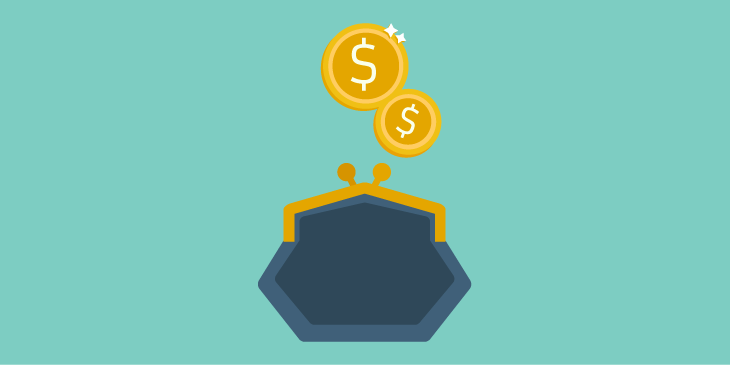On a semi-annual basis S&P Dow Jones produces a scorecard called the SPIVA® Canada Scorecard that reviews how actively managed mutual funds performed versus their benchmarks. It’s difficult reading for proponents of active fund management and heartening for those promoting passive, index-based strategies. S&P Dow Jones has been producing this scorecard for Canadian mutual funds since 2004, so we now have over 10 years of data to consider.
The SPIVA® scorecard provides performance data for 1, 3 and 5 year periods. Below is a graph that shows the percentage of Canadian equity mutual funds that underperformed the S&P/TSX Composite over 1, 3 and 5 year periods.
Sources: Boogleheads.org and S&P Dow Jones.
When looking at performance over 1 year, it is difficult to distinguish between skill and luck, so it generally shouldn’t be relied on to pick funds. With the exception of 2013, the number of funds that outperformed the TSX in a single year rarely exceeds 40%. On an average basis, only 31% of funds outperform in a 1 year period. Or put another way, 69% of funds underperformed.
As you consider longer and longer time periods, the incidence of underperformance gets worse. At 5 years, on average, 85% of funds underperformed! Funds focused on the US and international markets performed similarly poorly with 87-88% of funds underperforming on average in a 5 year period.
Dividend funds did even worse
Funds that are focused on dividend investing performed even worse. Compared to the S&P/TSX Dividend Aristocrats Index, 98% of funds underperformed over a 5 year period! Admittedly, this is only a sample of 8, 5-year periods, but in only 3 of those 5-year periods did any funds outperform. The best period was the 5 years ending in 2011 when almost 10% of the funds outperformed. Below is a graph that shows the percentage of Canadian dividend mutual funds that underperformed the S&P/TSX Dividend Aristocrats Index over 1, 3 and 5 year periods.
Sources: Boogleheads.org and S&P Dow Jones.
What to do? ETFs to the rescue!
The easiest way to reduce your chances of underperforming is to reduce your fees. Canadian mutual funds are by design, very easy for investors to access. Unfortunately, Canadian mutual funds have the highest fees of mutual funds in any country. Morningstar’s 2013 Global Fund Investor Experience Report gave Canadian mutual funds an F on fees and expenses. The average mutual fund fee in Canada is 2.4% per year. That means for every $1000 you have invested, you are paying $24 every year.
If you instead chose an ETF that tracks the S&P/TSX Composite, you would struggle to find one that charges more than 0.1% per year, a savings of more than 95%!
The 5th largest ETF in Canada, the iShares Core S&P/TSX Capped Composite Index ETF (Ticker: XIC) charges 0.05% per year. For every $1000 you have invested they charge you only $0.50 every year! Another of the largest ETFs in Canada, the BMO S&P/TSX Capped Composite Index ETF (Ticker: ZCN) charges 0.09%.
Similarly, the ETF replacements for dividend mutual funds are much less expensive. BMO’s Canadian Dividend (Ticker: ZDV) costs 0.40% per year. The iShares Canadian Select Dividend Index ETF (Ticker: XDV) costs 0.55%
But don’t I have to pay a fee to buy and sell an ETF?
Most brokerages charge around $10 to trade, regardless of the number of shares traded, however there are some that offer free trading on all ETFs or on a select list. Others offer free purchases but charge a fee to sell.
If you wanted to invest $1000 in XIC, you would pay at most $10 up front and when you sell you would pay another $10. Add in the ETF‘s 0.05% fees and you are up to a total cost of $20.50 for a 1 year holding period.
How does a mutual fund compare?
If you buy a mutual fund, there may be an upfront sales charge (called a Front-End Load), or there may be a cost to sell the fund (a Back-End Load or Deferred Sales Charge (DSC)) if you hold it for less than 5-7 years. DSC charges generally start in the 5% to 7% range in the first year and decline to 0% over the next 5 to 7 years. For every $1000 you sell that would be $50-70 dollars if you sold in the first year! So avoid those funds if possible!
Say you invested $1000 in a fund that has no charges to buy or sell and has the average fee of 2.4%. For a 1 year holding period, the cost of holding the fund would be $24.
Clearly the ETF is the winner. For larger investments the savings are even greater as the $10 brokerage fee on the ETF remains the same but becomes a smaller and smaller percentage of the investment. Also, the longer your holding period, the more attractive the ETF becomes.
